This post may contain affiliate links. Please read my privacy policy.
Sweet Potato Leaves with Sambal is a signature Malaysian dish, stir-fried with shrimp in a rich sambal sauce that combines fiery chili paste, creating a bold and flavorful vegetable dish that perfectly balances heat and depth.
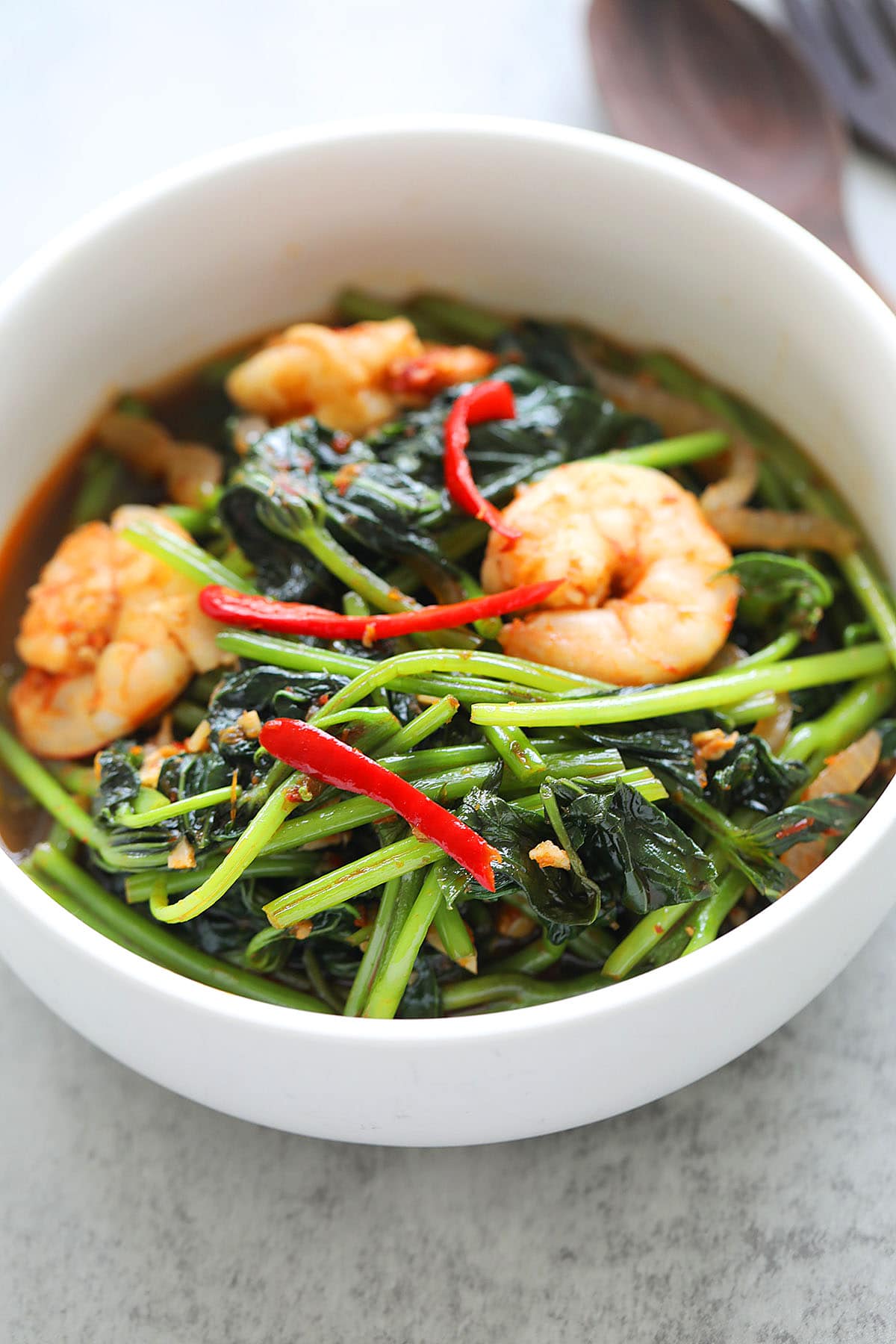
Sweet Potato Leaves Recipe
One vegetable dish that I simply can’t do without in my cooking repertoire is stir-fried sweet potato leaves with sambal belacan—even though it means my house ends up smelling quite pungent after making it.
The key ingredient is sambal, a fundamental spice paste in Malaysian cooking. Fiery and aromatic, with a hint of belacan (Malaysian shrimp paste), sambal’s pairing with vegetables is one of the most intriguing stir-frying techniques. The result is a bold, exquisite taste that is never boring.
While I love this recipe, I must warn you that it might be an acquired taste, especially for an American palate. However, it’s definitely worth a try, as you probably won’t find another vegetable dish as intriguing or delicious as this one!
Check out other signature Malaysian recipes!
What Are Sweet Potato Leaves
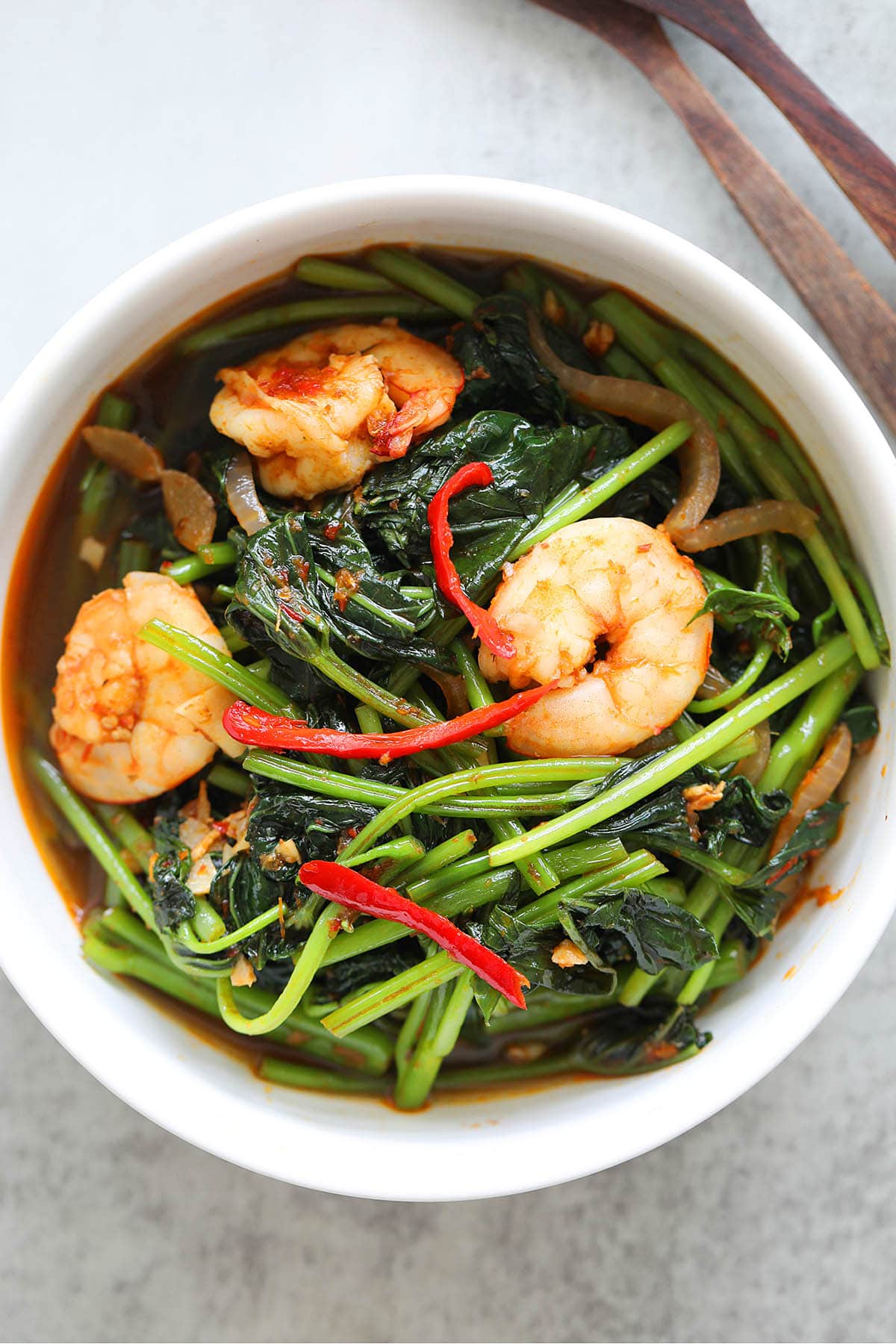
Sweet potato leaves are the green, leafy part of the sweet potato plant. They are edible and can be enjoyed as a healthy vegetable. Often used in various cuisines for their nutritional benefits and mild, slightly sweet flavor, sweet potato leaves are commonly stir-fried or added to soups in many Asian, especially Southeast Asian, dishes.
Tender yet slightly crisp, the leaves become soft and silky when cooked, with a mild, pleasant flavor that absorbs accompanying ingredients well. When added to soups, the soft texture enhances the dish, adding a nutritious and flavorful element to simple soups.
Sweet Potato Leaves Benefits
The leaves are green in color and packed with vitamins, minerals, and antioxidants, making them a healthy addition to meals.
- Rich in Nutrients: They are rich in vitamins A, C, and K, as well as folate and several B vitamins.
- Minerals: Sweet potato leaves are a good source of minerals such as calcium, iron, and magnesium.
- Fiber: The fibrous stems provide dietary fiber, which helps in digestion and ensure gut health.
- Low in Calories: Just like other leafy green vegetables, they are low in calories and fat
Recipe Ingredients
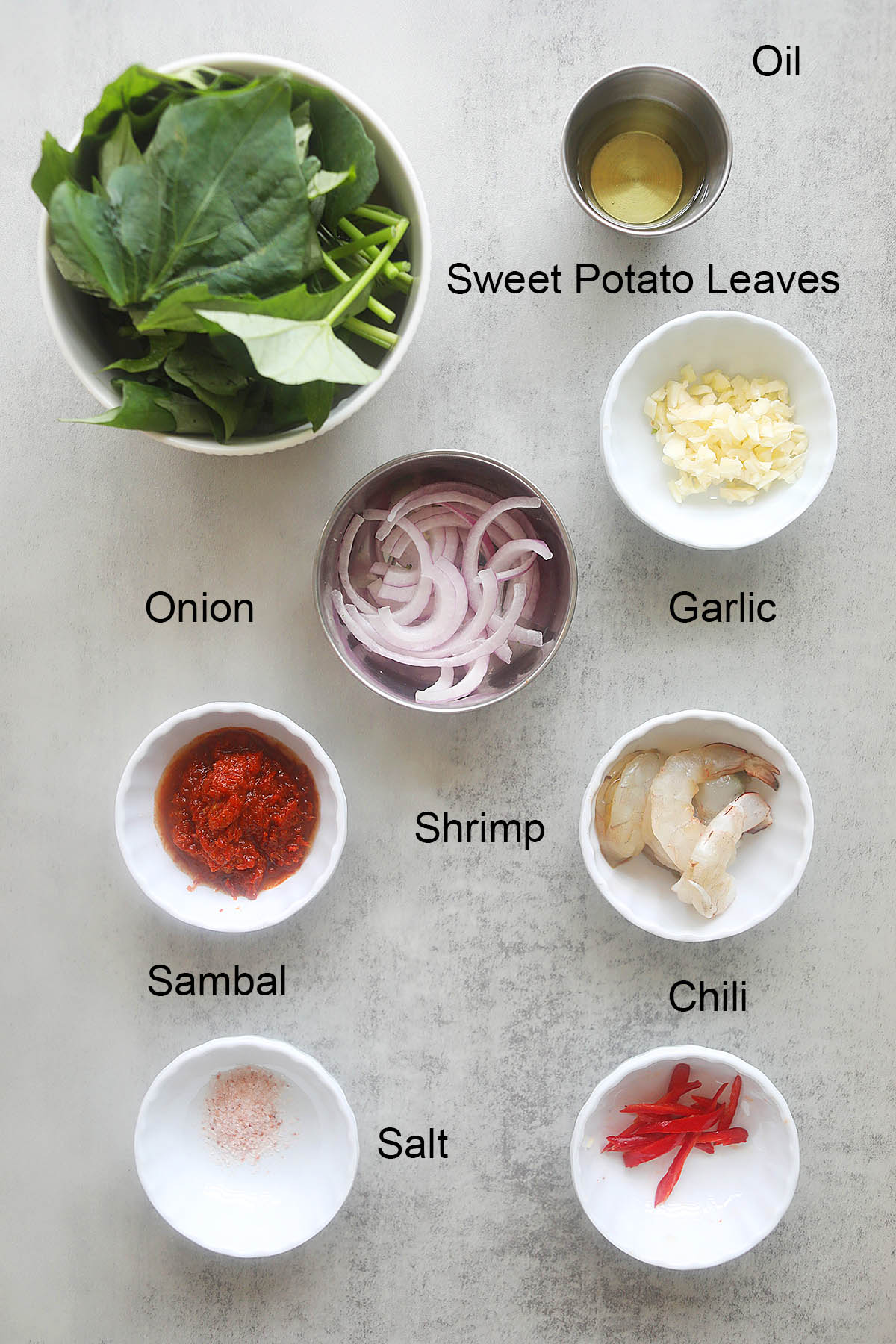
This recipe calls for only a few key ingredients:
- Sweet potato leaves (蕃薯叶)
- Garlic
- Onion
- Sambal
- Shrimp
- Red chili
- Salt
How To Cook Sweet Potato Leave
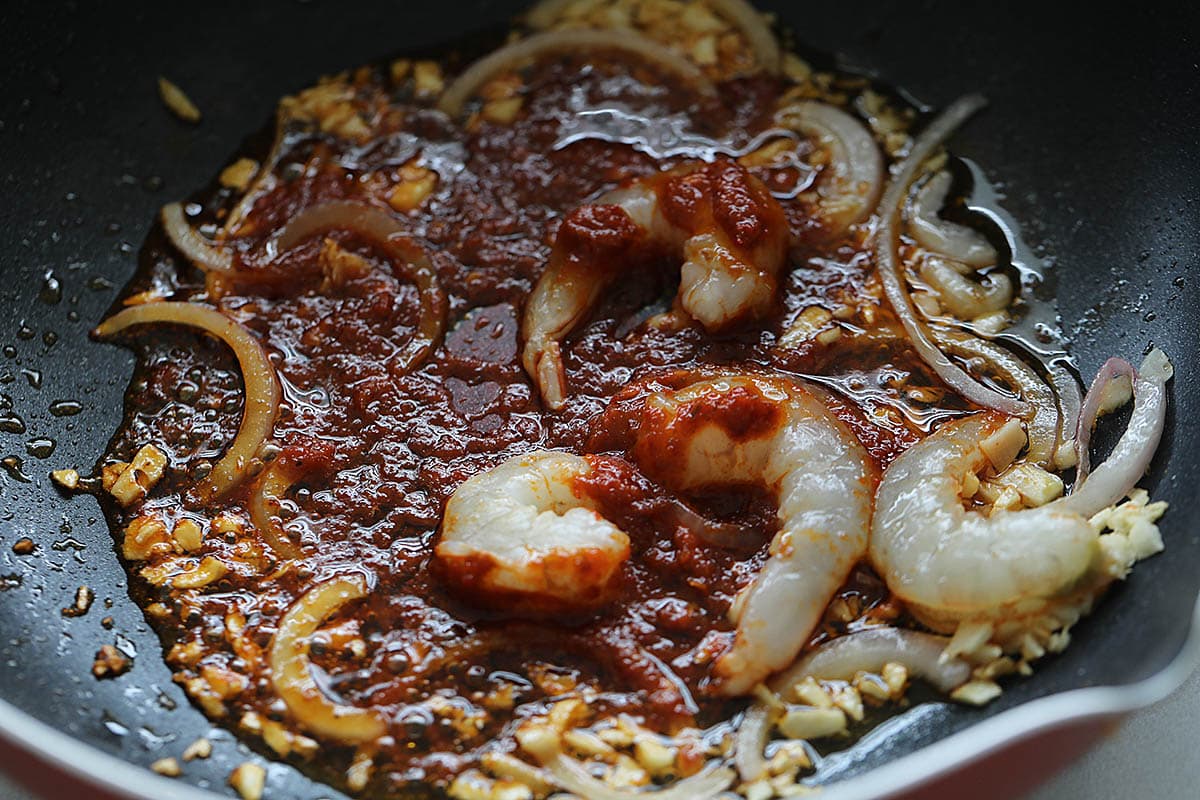
Step 1: Make the sambal by grinding all the ingredients together to form a fine paste. Set it aside. Heat a wok or skillet and add the oil. Once the oil is hot, add the garlic, onion, and sambal. Stir constantly with a spatula until you smell the spicy aroma from the sambal. Then, stir in the shrimp.
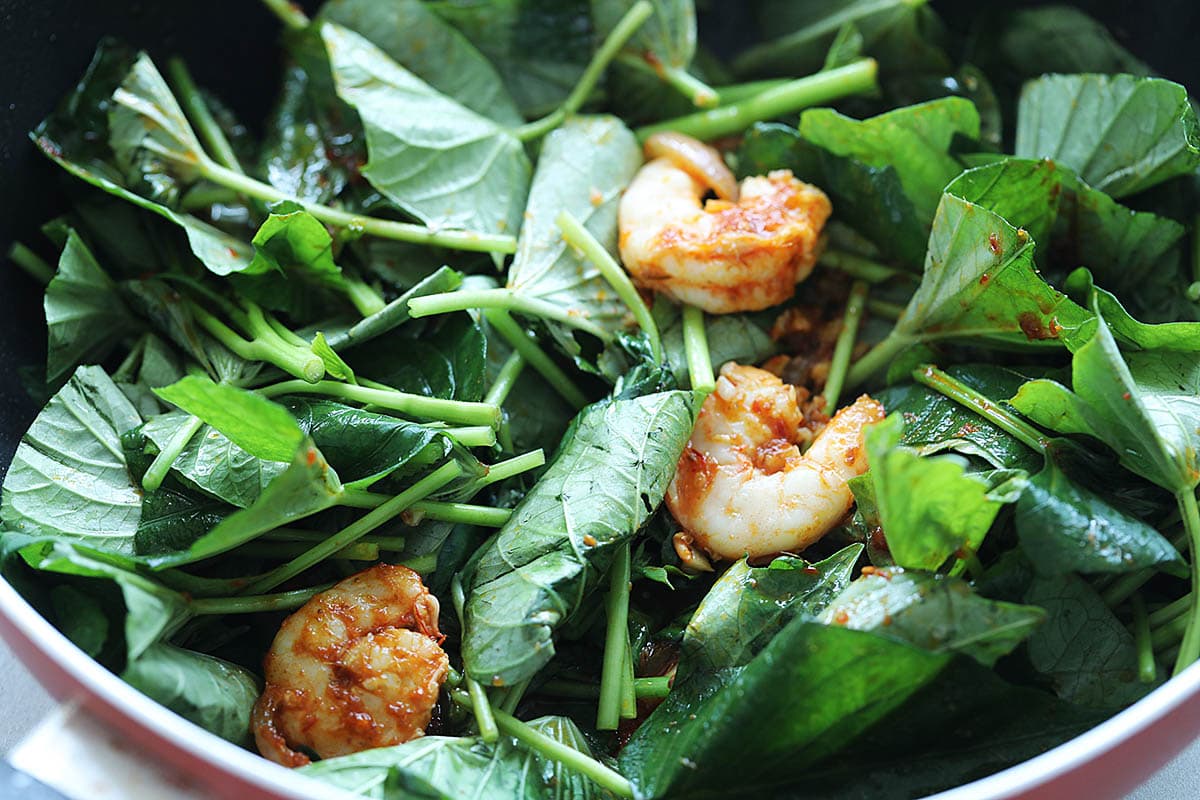
Step 2: Add the sweet potato leaves and stir continuously until they start to wilt.
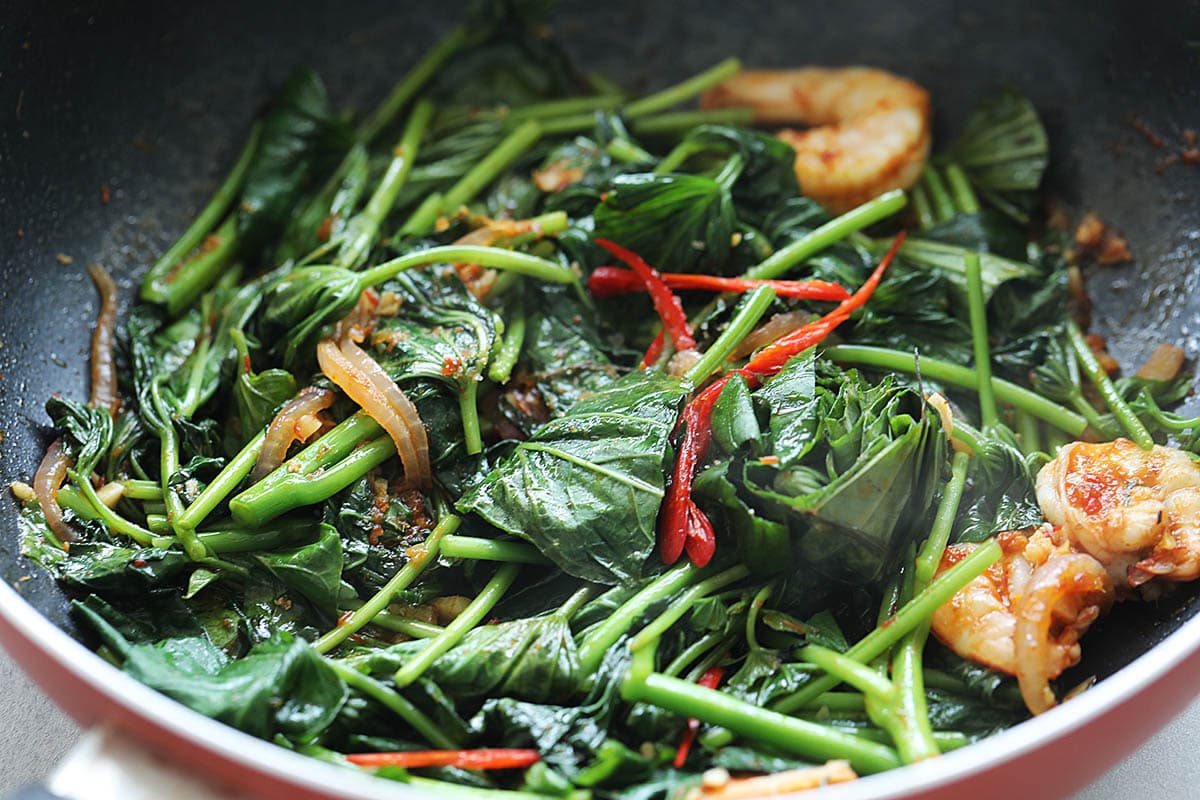
Step 3: Add the red chili and salt, and continue stirring to blend everything well. Turn off the heat, dish out, and serve immediately.
Helpful Tips For Home Cooks
- Substitute: In the U.S., sweet potato leaves (蕃薯叶) are often marketed as yam leaves, even though they are different. You can use water spinach (morning glory), the recipe will work just as well.
- High Heat: Sweet potato leaves cook quickly, so you need high heat and a brief cooking time to achieve the perfect texture.
- Timing: Proper timing is essential. Overcooking can cause the vegetables to turn a purplish color and become too soft and overly wilted.
Frequently Asked Questions
Sweet potato leaves and yam leaves are not the same! Sweet potato leaves come from the sweet potato plant while yam leaves come from yam. While both types of leaves are edible, they are different. However, in Asian supermarkets in the US, sweet potato leaves are marketed and labeled as yam leaves.
You can use other leafy greens like water spinach or morning glory as substitutes. The cooking method will be similar, though the flavor and texture might vary slightly.
You can store fresh sweet potato leaves in the refrigerator for a couple of days, keeping them in a sealed plastic bag. Use them before the leaves turn yellow for the best quality.
Yes, sweet potato plants are relatively easy to grow at home, particularly in regions with moderate temperatures, such as California. Be sure to provide them with ample sunlight and enough space to grow.
This recipe is only 156 calories per serving.
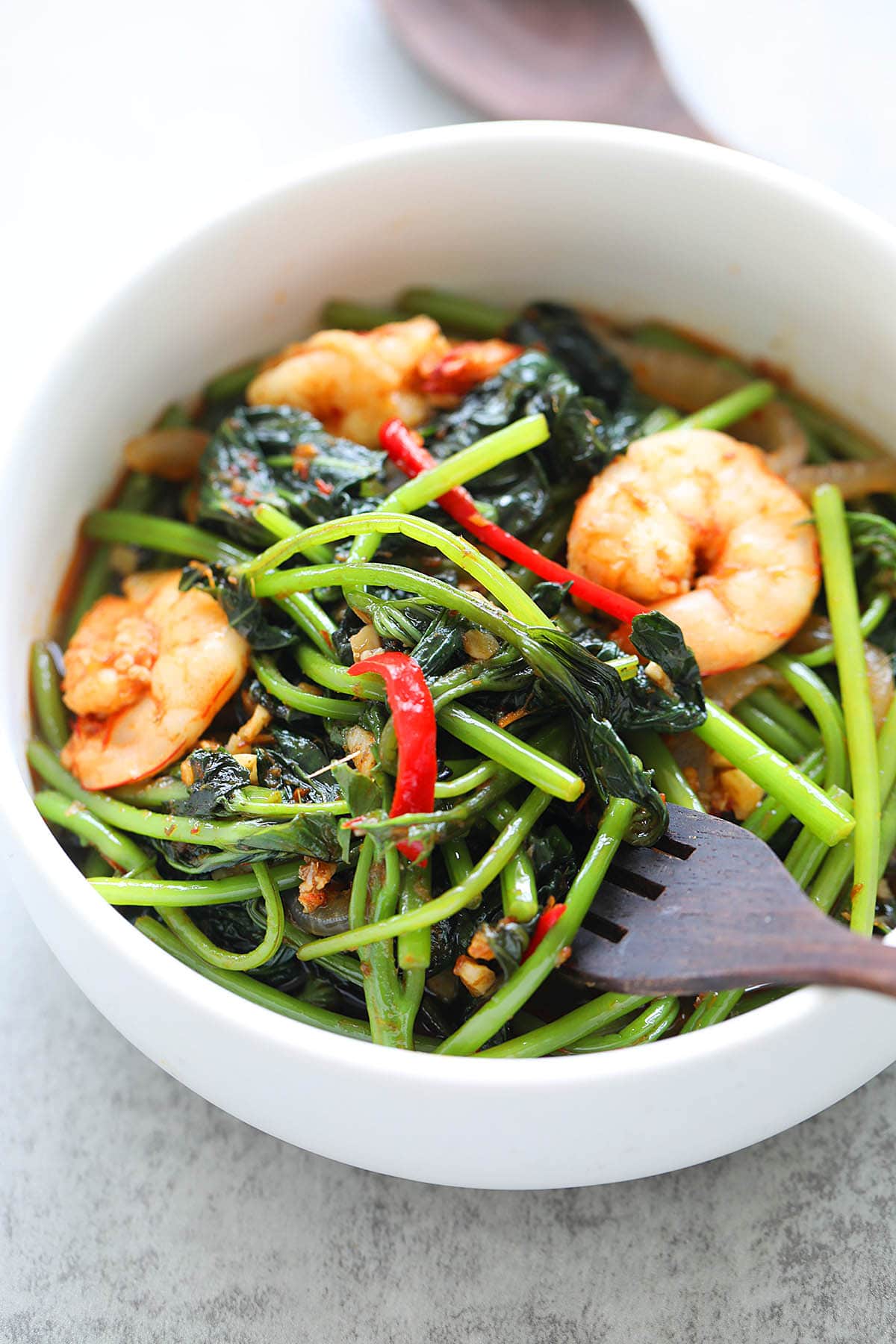
What To Serve With This Recipe
For a wholesome Malaysian-style meal meal at home, I recommend the following recipes.
I hope you enjoy this post as much as I do. If you try my recipe, please leave a comment and consider giving it a 5-star rating. For more easy and delicious recipes, explore my Recipe Index, and stay updated by subscribing to my newsletter and following me on Facebook, Pinterest, and Instagram for new updates.
Other Recipes You Might Like
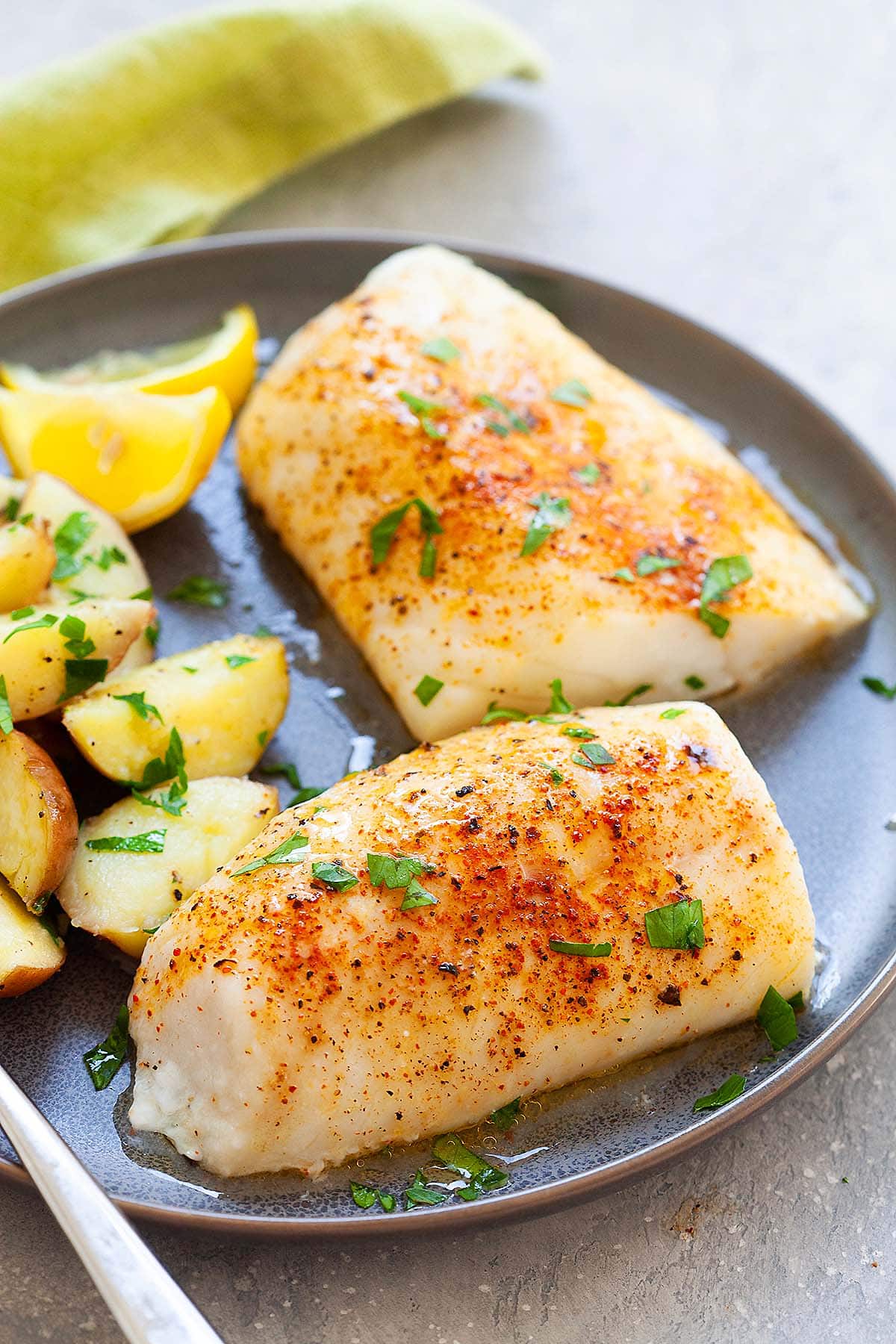
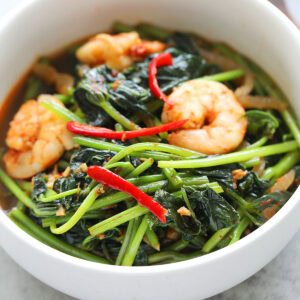
Sweet Potato Leaves with Sambal
Ingredients
- 2 tablespoons cooking oil
- 3 cloves garlic, minced
- 1/2 onion, sliced
- 6 medium-sized shrimp, peeled and deveined
- 7 oz sweet potato leaves , rinsed, stems trimmed, and cut into pieces
- 1 red chili, seeded and thinly sliced
- 1/4 teaspoon salt, or to taste
Sambal
- 1 handful (6-8) dried red chilies , seeded
- 3 shallots, peeled
- 1/2 teaspoon belacan , Malaysian shrimp paste
- 1 tablespoon cooking oil
- 1 tablespoon water
Instructions
- Make the sambal by grinding all the ingredients together to form a fine paste. Set it aside.
- Heat a wok or skillet and add the oil. Once the oil is hot, add the garlic, onion, and sambal. Stir constantly with a spatula until you smell the spicy aroma from the sambal. Then, stir in the shrimp.
- Add the sweet potato leaves and stir continuously until they start to wilt.
- Add the red chili and salt, and continue stirring to blend everything well. Turn off the heat, dish out, and serve immediately.
Notes
- In the US, sweet potato leaf (蕃薯叶) is marketed as yam leaf, even though they are different.
- If you use water spinach or morning glory, the recipe works the same.
Nutrition
Nutrition information is automatically calculated, so should only be used as an approximation.

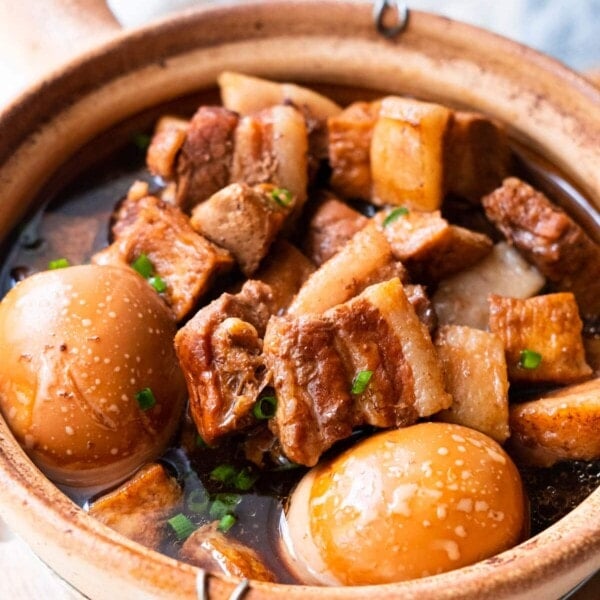
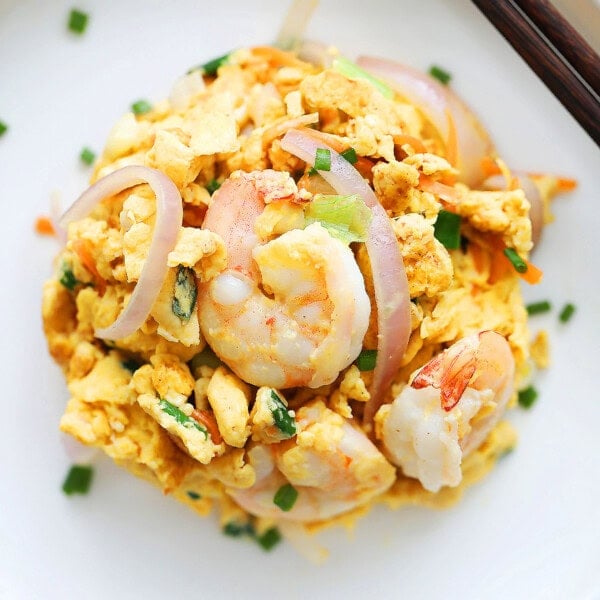







This is the kind of recipe I really love, and I have belacan in my pantry. Thank you!
Thanks Kortez. Belacan is amazing.
Terima Kasih! Love your all your recipes. I am a former Sabahan now living in the US and prefer to cook Malaysian dishes more often whenever possible. In fact, in the spring, I planted my own Kang Kung in my garden. Whenever I cook dishes with Belacan, none of my friends would come visit me.
Hi John, thanks for trying my recipe.
hi there – thanx so much for these recipes – i am half malaysian, living in UK and about to do a dinner party 1st time cooking this dish which i love BUT – the smell is so strong – wondering if i can part cook it before and then just reheat?! Will that work or will veg be awful? pls with any suggestions as doing this in 2 days!
Hi Jeff, yes the smell is strong there is no way to escape the smell if you want to cook with belacan.
Found a short cut for the sambal paste, and it tasted yummy! Substituted with instant sambal belachan paste from prima taste sold in supermarkets. Try it!
Looks so yummy. If yours comes out a bit salty, I recommend drizzling it with few drops of lemon.